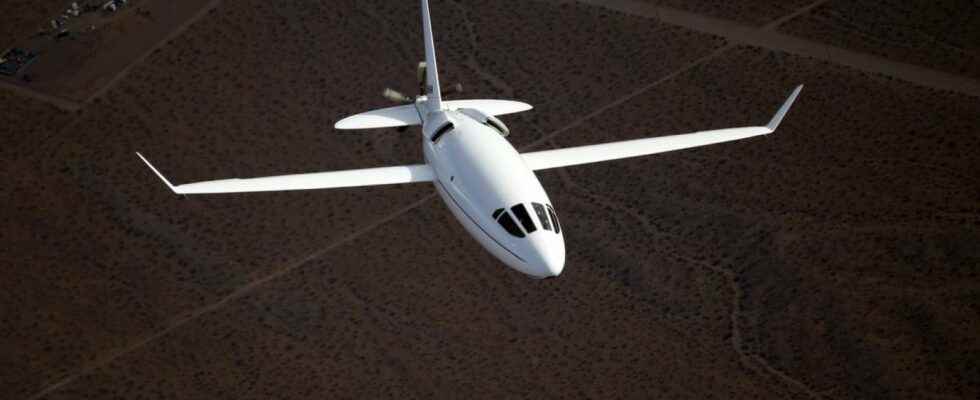A suppository look with wings of glider. With this odd and counter-intuitive design, the Celera 500L fromOtto Aviation would manage to reduce its drag by nearly 60%. The rounded shape of the cabin optimizes the flow laminari.e. the layers ofair coming to slide along the fuselage. Thus, the layers of air mix less, which comes to attenuate the drag and consume lessenergy.
Equipped with such an asset, its efficiency is formidable and it would cost five to seven times less to operate than a business jet, with an 80% reduction in fuel consumption. And yet, for the moment, theaircraft which is only at the prototype stage is powered by a combustion of 500 horsepower, with which he has already carried out 55 test flights. It should prove to be much more economical in the future by switching to hydrogen. It is in any case, the next development of the Celera 500L, since Otto Aviation is associated with ZeroAvia for this purpose. The partners consider that with this Fuel cell at hydrogenthe device should be able to have a range of 1,852 kilometers at first.
With its particular shape, the Celera 500L is immediately suitable for carrying hydrogen. © Otto Aviation
A more virtuous business aviation
In theory, the aircraft could carry up to six passengers over a distance of 8,335 kilometers at a speed top cruising speed of around 740 km/h. Proof of its effectiveness, despite its overweight, its shape and its wings give it an impressive finesse. It can thus travel up to 200 kilometers in glideengine cut from sound altitude cruising. The manufacturer estimates that it could offer a model that can accommodate up to 19 passengers, but this would be the maximum, due to the proportions of the aircraft. For the moment, on the 55 successful test flights, the Celera 500L has been able to operate at speeds greater than 400 km/h and a maximum altitude of 5,000 meters. In any case, that it retain its propulsion at fossil fuelsor that it passes to hydrogenthe aircraft will drastically reduce the carbon footprint private business aviation.
This funny experimental plane could revolutionize tourist transport
Capable of carrying six passengers over more than 8,300 kilometres, the Celera 500L can reduce its emissions of carbon compared to an equivalent business jet, due to its particular shape.
Article of Louis Nephewpublished on
With its look of dirigible with a slender look and an equivocal name, the Celera 500L looks like something out of a science fiction movie or a comic book Black and Mortimer. And yet, this is not an artistic view, but a real prototype having already carried out 31 test flights. Designed by Otto Aviation, the Celera 500L promises exceptional performance and efficiency.
The aircraft is powered by a V12 Diesel engine delivering 500 hp, which is rare for a passenger aircraft. This engine is found on a few devices, including the Yak-52 and a planespreading. With it, the single-engine will be able to reach a maximum cruising speed exceeding 724 km/h. Its autonomy will be around 8,330 kilometers. According to the aircraft manufacturer, the fuel economy would be eight times greater than that of an equivalent business jet.
Optimize laminar flow
To reduce its carbon footprint and increase its efficiency, the Celera 500L has been able to optimize the flow of air flows around the cabin, the wings and theempennage. Optimize the airflow on the fuselage is to improve its laminar flow. In the case of the Celera 500L, the aerodynamics allow the air to slide as slowly as possible over the surface and prevent the different layers of air from mixing and creating drag. This strange elongated ovoid shape, associated with long wingsthin and narrow, reduces drag by up to 59% and therefore considerably improves the lift. In the end, the plane emits 80% less carbon than an equivalent business jet.
The Celera 500L is capable of carrying six passengers in a 1.85 meter high cabin and is expected to enter service in 2025, after certification from US authorities scheduled for 2023.
Interested in what you just read?
